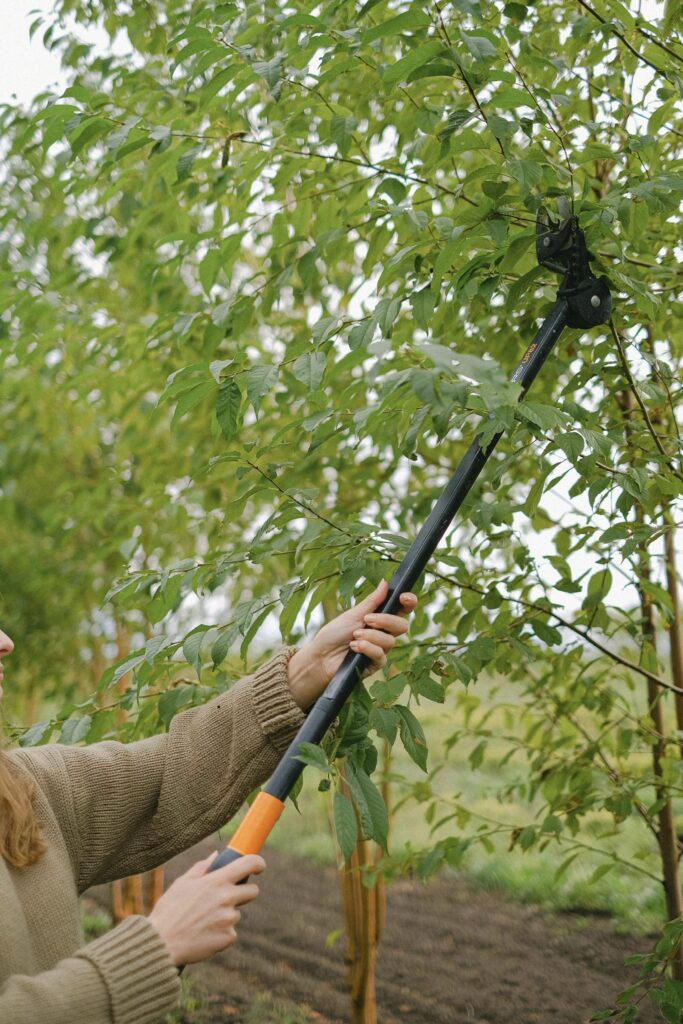
Tree trimming is more than just a way to keep your landscape neat; it’s an essential part of maintaining the health, safety and appearance of your trees. Overgrown branches, dead limbs or poorly shaped canopies can cause hazards and reduce the longevity of your trees. Regular trimming ensures healthy growth patterns, prevents disease and enhances curb appeal. However, many homeowners are uncertain about how often to schedule tree trimming in Edmonds, WA. While the answer depends on tree type, growth rate and condition, experts provide clear guidelines to help you determine the right schedule for your property.
1. The Role of Tree Age in Trimming Frequency
Young trees require more frequent trimming compared to mature ones because they are in their formative years of growth. Regular trimming for younger trees, usually every one to two years, helps establish a strong structure and prevents future issues. Mature trees, on the other hand, may only need trimming every three to five years unless there are signs of disease or damage. By setting early trimming schedules, you help the tree grow in a balanced way that reduces risks in the future. Age is a crucial factor in determining trimming frequency and it should not be overlooked when planning maintenance.
2. Seasonal Factors That Influence Trimming Schedules
The time of year significantly impacts how often and when trimming should be done. For most trees, the dormant season, typically late winter or early spring, is the best time to trim because it encourages healthy regrowth. Trimming during dormancy also reduces the risk of pest infestation or disease spread. However, certain flowering trees may benefit from trimming immediately after their bloom cycle to preserve the flowers for the following year. Understanding seasonal cycles ensures trimming enhances tree health instead of unintentionally harming it.
3. Safety and Hazard Prevention as Key Motivators
Trimming schedules are not only about tree health but also about protecting people and property. Overhanging branches near roofs, driveways or power lines can create serious hazards if left unchecked. Experts recommend inspecting trees at least once a year to identify safety risks, even if full trimming isn’t necessary each time. Emergency trimming may be needed following severe weather, such as storms or high winds, which can weaken branches. By scheduling trims regularly with safety in mind, homeowners avoid costly property damage and dangerous accidents.
4. Species-Specific Needs and Growth Rates
Different tree species grow at different rates, which directly affects how often they require trimming. Fast-growing trees such as willows or silver maples may need attention every two years to prevent weak branch structures. Slower-growing trees like oaks or pines can often go three to five years between trims. Additionally, fruit trees require annual pruning to encourage healthy production and manageable sizes. Consulting an arborist to evaluate species-specific requirements ensures that trimming frequency is customized to each tree in your yard rather than using a one-size-fits-all approach.
5. Signs That Indicate Immediate Trimming Is Necessary
Even with a set schedule, trees sometimes display signs that call for trimming outside the usual cycle. Dead, diseased or broken branches should be removed immediately to prevent further damage to the tree or surrounding landscape. Excessive canopy density, where sunlight struggles to reach the lower branches or surrounding grass, is another sign that trimming should not be delayed. Visible structural issues such as crossing branches or an imbalanced shape also require prompt attention. Paying attention to these warning signs prevents long-term damage and helps maintain both tree health and visual appeal.
The frequency of trimming a tree depends on multiple factors including tree age, season, safety risks, species growth rates and warning signs of damage. Most trees benefit from professional trimming every three to five years, though some require more frequent care. Regular trimming not only keeps trees healthy but also ensures your property remains safe and attractive. By working with an experienced arborist, you can create a tailored trimming schedule that maximizes the lifespan of your trees and prevents costly problems. Consistency in maintenance is the key to strong, beautiful and safe trees for years to come.
If you’re unsure whether your trees are due for a trim, don’t wait until issues arise. Schedule a professional inspection and tree stump removal in Edmonds, WA. Protect your property, promote healthy growth and enhance curb appeal with routine trimming from trusted professionals at Cascade Tree Services at 425-530-9697.
FAQs
1. How often should I trim my fruit trees?
Fruit trees typically require annual trimming to encourage healthy production, improve air circulation and control size. Pruning each year also helps prevent broken limbs from heavy fruit loads.
2. Can trimming be done during the summer months?
While dormant season is best, light trimming during summer is acceptable to remove dead or hazardous branches. However, heavy pruning in summer may stress the tree, so it should be avoided unless necessary.
